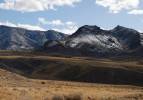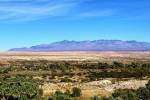EDITORIAL: Sage-grousing
The battle in Bunkerville over grazing fees and the purported need to protect the desert tortoise caught the nation’s attention last month. But no matter how that conflict is ultimately resolved, the impact will pale in comparison to the economic damage that will hit Nevada if the sage-grouse is designated a threatened or endangered species in northern and central parts of the state.
As reported by the Review-Journal’s Sean Whaley on Sunday, the U.S. Fish & Wildlife Service is considering just such a designation. In fact, the agency determined the sage-grouse needed it back in 2010, but the service had to hold off because of more pressing issues. Mr. Whaley noted that a decision on how to proceed must come by September 2015 as a result of a court-ordered settlement between the agency and environmental groups.
No surprise there. Environmental busybodies occasionally have reasonable causes, but more often than not, the goal is to make more land off limits. Rancher Cliven Bundy’s feud with the Bureau of Land Management was born from the desert tortoise listing, which has greatly complicated putting public lands to productive use. A sage-grouse listing could greatly harm the movement to get more federal land under state and local control. Furthermore, as Mr. Whaley reported, ranching, mining and the energy sector — fracking prospects in this state could be tremendous for energy and job creation — would take a huge hit.
The numbers don’t support a federal listing of the sage-grouse, just as they didn’t support special protections for the tortoise. There are untold thousands of desert tortoises living in the Las Vegas Valley, proving the animals are more than able to adapt to their environment. The Nevada Division of Wildlife estimated the sage-grouse population at nearly 86,000 in 2012. Although that number was closer to 75,000 in 2013, the ongoing drought was noted as the primary cause of the decline, not any competing activity.
In fact, job-creating activities pose no real threat to this bird, particularly oil and natural gas wells, which have a minimal footprint. But the federal government and its allies in the environmentalist camp are pursuing an endangered or threatened designation as a means to an end: to seal off land from public use. Worse still, much of this land in the northern and central portions of Nevada is in rural counties that struggle to fund services because they have no property tax base from which to draw operating revenues — the federal government owns most of the land. Locking out more land only serves to deny economic activity on that land, further hamstringing those counties’ efforts to get on stronger economic footing.
Gov. Brian Sandoval, to his credit, recognized the economic impact of such a designation and issued an executive order in 2012 creating an advisory council to work on the issue — the Sagebrush Ecosystem Council, which oversees the Sagebrush Ecosystem Program established by the 2013 Legislature to head off a listing of the bird.
In this instance, an endangered or threatened designation is an unnecessary disincentive to local economies and job creation. Washington already owns far too much land in Nevada, more than 80 percent of it. Gov. Sandoval and the Legislature have worked in good faith on a state solution that doesn’t kill the economy of these rural areas. The federal government needs to back away from yet another burdensome regulation and let the state resolve this issue.























